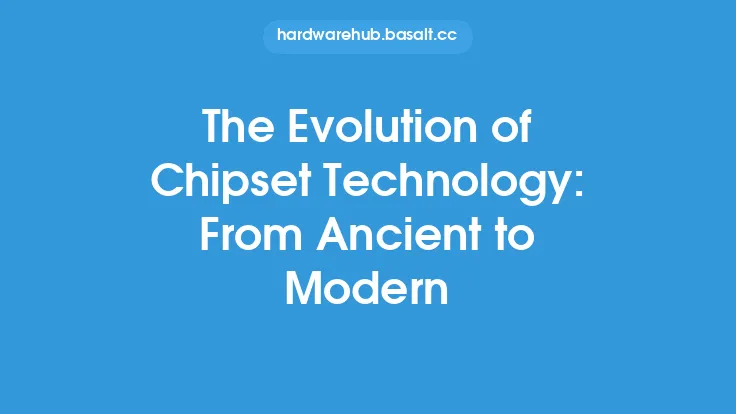The history of GPU architecture is a rich and fascinating one, spanning several decades and numerous innovations. From humble beginnings to the powerful, sophisticated designs of today, the evolution of GPU architecture has been marked by significant milestones, breakthroughs, and advancements. In this article, we will delve into the key developments that have shaped the GPU landscape, exploring the major architectural changes, technological advancements, and industry trends that have contributed to the modern GPU.
Early Days of GPU Architecture
The first graphics processing units (GPUs) emerged in the 1970s and 1980s, with companies like IBM, Atari, and Commodore introducing early graphics processors. These primitive GPUs were largely limited to basic 2D graphics and lacked the complexity and capabilities of modern GPUs. The introduction of the IBM Professional Graphics Adapter (PGA) in 1984 marked one of the first significant milestones in GPU development, offering improved graphics capabilities and paving the way for future innovations.
The Rise of 3D Graphics and Programmable Shaders
The 1990s saw the dawn of 3D graphics, with the introduction of GPUs like the NVIDIA NV1 and the 3dfx Voodoo Graphics. These early 3D GPUs were capable of rendering basic 3D scenes, but were still limited by their fixed-function architectures. The game-changer came with the introduction of programmable shaders, which allowed developers to write custom code for the GPU. This marked a significant shift towards more flexible and powerful GPU architectures, enabling the creation of more complex and realistic graphics.
The Advent of Unified Shaders and Multi-Core Designs
The early 2000s saw the introduction of unified shaders, which combined the functions of vertex and pixel shaders into a single, programmable unit. This design change enabled more efficient and flexible graphics processing, and paved the way for the development of multi-core GPUs. The introduction of multi-core designs, where multiple processing units were combined on a single die, marked a major milestone in GPU architecture. This allowed for significant increases in processing power, enabling the creation of more complex and detailed graphics.
The Era of GPGPU and GPU Computing
The mid-2000s saw the emergence of General-Purpose computing on Graphics Processing Units (GPGPU), which enabled GPUs to be used for non-graphics computations. This was made possible by the introduction of CUDA (NVIDIA) and OpenCL (Khronos Group), programming models that allowed developers to harness the massive parallel processing capabilities of GPUs for tasks like scientific simulations, data analytics, and machine learning. The rise of GPGPU computing marked a significant shift in the role of GPUs, from specialized graphics processors to general-purpose computing accelerators.
The Modern Era: Advances in GPU Architecture
In recent years, GPU architecture has continued to evolve at a rapid pace, driven by advances in semiconductor technology, changes in market demand, and the growing importance of artificial intelligence (AI) and machine learning (ML) workloads. Modern GPUs feature complex, heterogeneous architectures, with multiple types of processing units, including CUDA cores, tensor cores, and ray tracing accelerators. The introduction of new memory technologies, like HBM2 and GDDR6, has also enabled significant increases in memory bandwidth and capacity, further enhancing GPU performance.
The Impact of AI and Machine Learning on GPU Architecture
The growing importance of AI and ML workloads has had a profound impact on GPU architecture, driving the development of specialized processing units, like tensor cores and deep learning accelerators. These units are designed to accelerate specific tasks, like matrix multiplication and convolutional neural networks, and have enabled significant increases in AI and ML performance. The integration of AI and ML capabilities into GPUs has also led to the development of new programming models, like NVIDIA's TensorRT and Google's TensorFlow, which simplify the development of AI and ML applications.
The Future of GPU Architecture
As we look to the future, it is clear that GPU architecture will continue to evolve in response to changing market demands, advances in technology, and the growing importance of emerging workloads like AI, ML, and virtual reality (VR). The development of new memory technologies, like GDDR7 and HBM3, will enable further increases in memory bandwidth and capacity, while advances in semiconductor technology will allow for the creation of even more complex and powerful GPU architectures. The integration of specialized processing units, like ray tracing accelerators and AI accelerators, will also continue to enhance GPU performance and capabilities, enabling the creation of more realistic, interactive, and immersive graphics and computing experiences.





